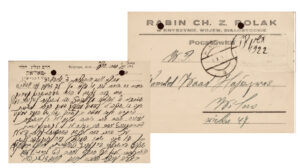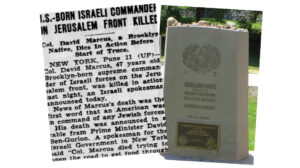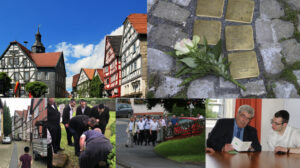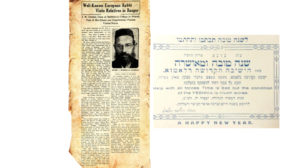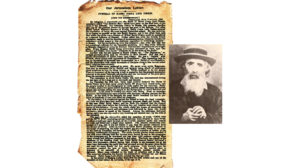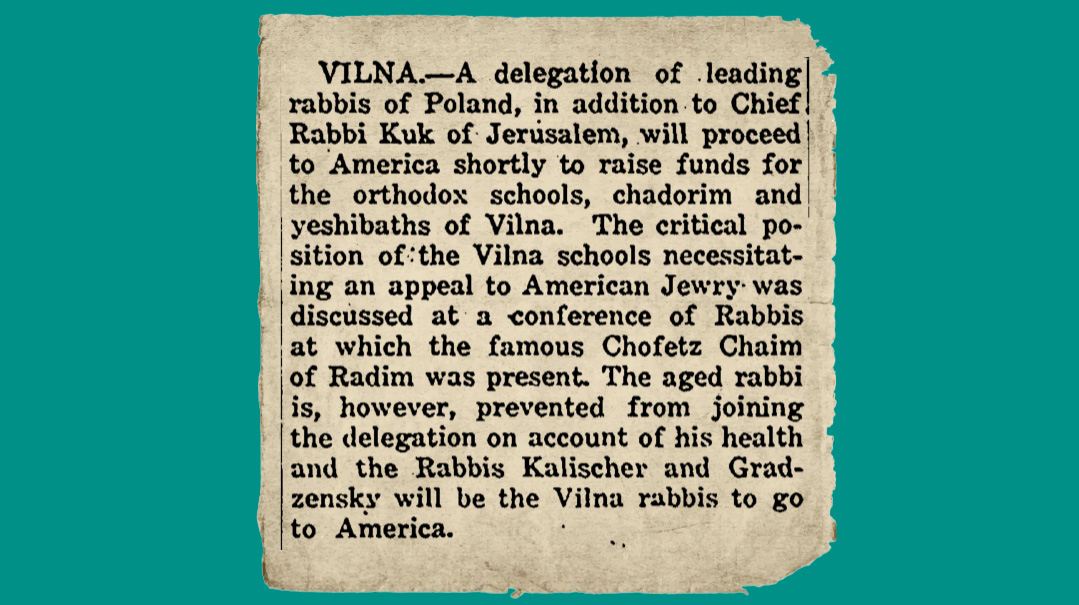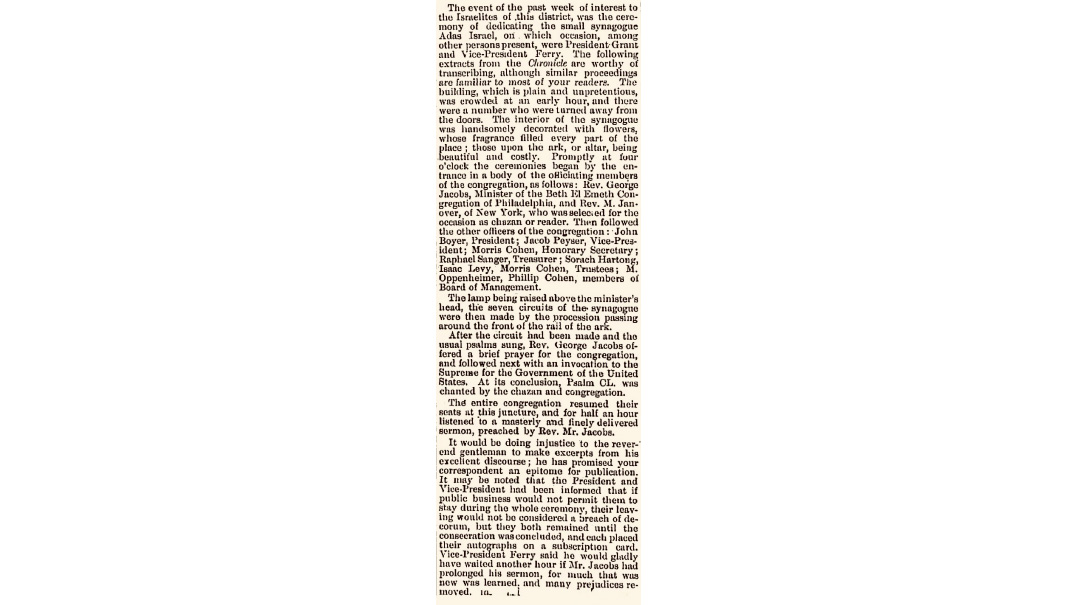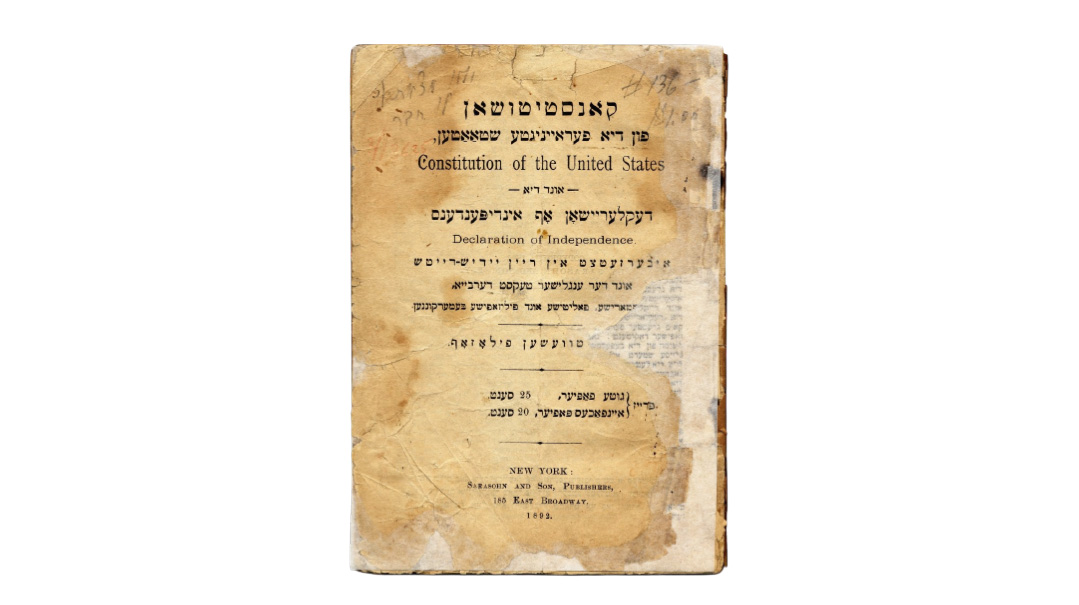“Der Baal Teshuvah” Comes to America
| August 31, 2021Dr. Birnbaum’s continued search led him to Orthodox Judaism
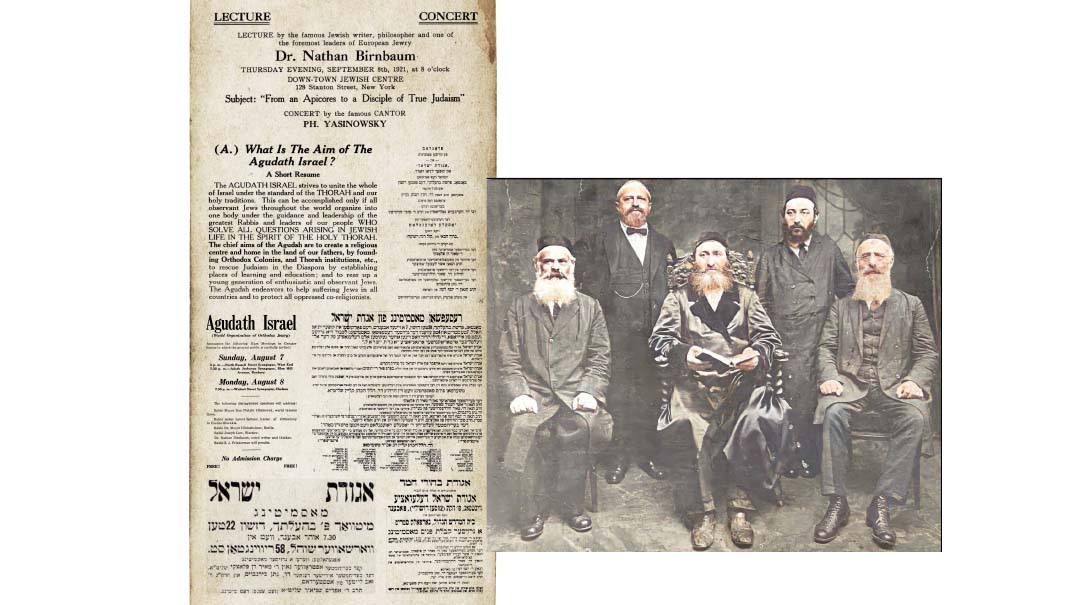
Title: “Der Baal Teshuvah” Comes to America
Location: New York
Document: Various newspaper clippings
Time: Summer 1921
While the Agudath Israel delegation that arrived in the US during the summer of 1921 included great European rabbinic leaders, it was the layman of the group who garnered the most press attention. This wasn’t the first time that Dr. Nathan Birnbaum (1864–1937) had visited the country. Since his previous trip in 1908, he had undergone a complete metamorphosis. Then known by his nom de plume “Mathias Acher” (an allusion to his disbelief), he came to preach the preeminence of Yiddish as a form of Jewish identity. Now he was a baal teshuvah extolling the virtues of the Agudah movement.
Dr. Birnbaum’s intellectual odyssey personified the Jewish search for identity in the modern era. Born in Vienna to a family of immigrants from Eastern Europe, Birnbaum commenced his public career as a leader of a local proto-Zionist group that preceded the political movement by almost two decades. During that stint he coined the term Zionism itself.
Disillusioned after the first Zionist Congress in 1897, Birnbaum soon embraced cultural nationalism and advocated for the centrality of Yiddish to Jewish identity. He was the primary organizer of the 1908 Czernowitz conference for Yiddish. Several years later he became disenchanted and left that movement as well.
Dr. Birnbaum’s continued search led him to Orthodox Judaism. After taking on full observance, he joined the nascent Agudas Yisrael and became the movement’s chief spokesman. It was in this capacity that he joined the World Agudah Organization’s diverse delegation on its 1921 mission to American Orthodoxy.
The delegation included Rav Meir Hildesheimer of Berlin; Rav Meir Don Plotzki, author of Kli Chemdah, from Poland; Rabbi Asher Lemel Spitzer of Slovakia, and several others. They hoped to fundraise for Agudah initiatives, and to galvanize traditional American Jewry around the Agudah’s mission and organize them politically.
Given Dr. Birnbaum’s past leadership in rival movements, his prestige, and his previous visits to the United States, media coverage of the delegation focused on him, especially on his intriguing personal return to traditional Jewish observance. Though the three-month trip met with limited success, it did plant the seeds for the subsequent resurgence of organized Orthodox life on those shores several decades hence.
Degree of Disappointment
Some of the excitement surrounding the delegation was curtailed when it was learned that Rav Chaim Ozer Grodzenski was not among its participants. For months prior to the group’s arrival, speculation centered on who would be leading it, including Rav Meir Shapiro, Rav Moshe Mordechai Epstein, and (perhaps most far-fetched) the Chofetz Chaim.
Nothing But Truth
On the 1921 trip, Dr. Birnbaum was guest speaker at an event paying tribute to the Yiddish writer Y. L. Peretz, a throwback to the theme of his earlier trip. The only attendee wearing a yarmulke, he shocked dozens of eminent American Yiddishists when he made an audible blessing over his drink and wouldn’t partake of the meal. In Dr. Birnbaum’s “highly poetic and religious speech,” a Forward writer reported his observation that “if the deceased Y. L. Peretz [who had left the fold] had still been alive for these last several years, he’d be wearing a yarmulke as well.”
The authors would like to thank Professor Jess Olson, whose research of Dr. Nathan Birnbaum was utilized in the preparation of this article, as well as David Birnbaum, director and archivist of the Nathan and Solomon Birnbaum Family Archives in Toronto, for providing several of the exhibits for this article.
(Originally featured in Mishpacha, Issue 876)
Oops! We could not locate your form.

